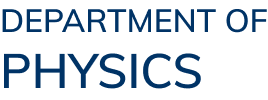Abstract
At room temperature, an ensemble of atoms or molecules exhibits random thermal motion, and their behavior is described by Maxwell-Boltzmann statistics. When the atomic system is cooled towards absolute zero, quantum effects dominate and atoms obey either Bose-Einstein or Fermi-Dirac statistics, depending on whether they have integral (bosons) or half-integer spin (fermions), respectively [1]. At temperatures above a few nano-Kelvin of absolute zero, atomic ensembles enter the “ultracold” regime, exhibiting collective quantum phenomena such as Bose–Einstein condensation and Fermi degeneracy. Moreover, ultracold atomic gases provide an ideal platform for simulating complex quantum many-body systems, due to their high degree of controllability and tunability [2]. Extensive research has been conducted on ultracold atoms of single-component alkali and alkaline-earth elements, typically possessing negligible dipole moments. As a result, their dynamics are governed by short-range, isotropic contact interactions.
In contrast, dipolar magnetic quantum gases, particularly those based on erbium and dysprosium, have garnered significant interest [3, 4]. The dipoles attract each other when aligned head-to-tail and repel each other when arranged side by side [5]. This anisotropic and long-range character of the dipole–dipole interaction, combined with the ability to tune contact interactions via Feshbach resonances, makes ultracold dipolar atoms a natural choice to explore novel quantum many-body physics, such as the formation of quantum droplets and the emergence of supersolidity [4]. In this thesis, I study ultracold dipolar quantum gases of erbium atoms and their interaction with superradiant light scattering. Furthermore, this thesis focuses on the bosonic isotope of the erbium atom.
First, I introduce the erbium apparatus and explain the production and characterization of a dipolar Bose-Einstein condensate (BEC) of erbium atoms [6]. Thereafter, I describe the operating principles and performance of a feedback system and H-bridge, developed for precise control over the magnetic field’s strength and orientation, enabling fast and fine-tuning of the dipolar interactions.
The second part of this thesis focuses on the theoretical and experimental investigation of quantum droplets with tilted dipoles. A quantum droplet is a self-bound state that emerges from the balance between attractive and repulsive interactions, governed by mean-field interactions and beyond-mean-field quantum fluctuations, respectively [3, 7]. Previous studies have primarily explored single macrodroplets with dipoles aligned along the elongated trap axis. However, to date, the behavior of a single macrodroplet with tilted dipoles and its interaction with superradiant light remains unexplored. Here, the coherence property and expansion dynamics of dipolar BEC and quantum droplets are probed through superradiant light. Superradiance refers to the enhanced, coherent emission of light that results from the collective behavior of an ensemble of atoms acting in a phase-correlated manner. The experimental observation of superradiance across the BEC–droplet transition reveals a nonmonotonic behavior of superradiant efficiency. These findings demonstrate the utility of superradiance as a sensitive probe and a versatile tool for studying ultracold quantum matter with long-range dipolar interactions.
The third part of this thesis investigates an array of localized density peaks confined within an elongated trap. Although several studies have reported the formation of multiple droplets when dipoles are oriented perpendicular to the long axis of the trap [3, 8, 9], the case of dipoles aligned along the elongated axis has so far revealed only single macrodroplets [10]. In this study, we explore the dynamics of multiple density peaks in this configuration, focusing on their interactions, collisions, and coalescence. Finally, the thesis concludes with a summary of the research and a discussion of future research.
